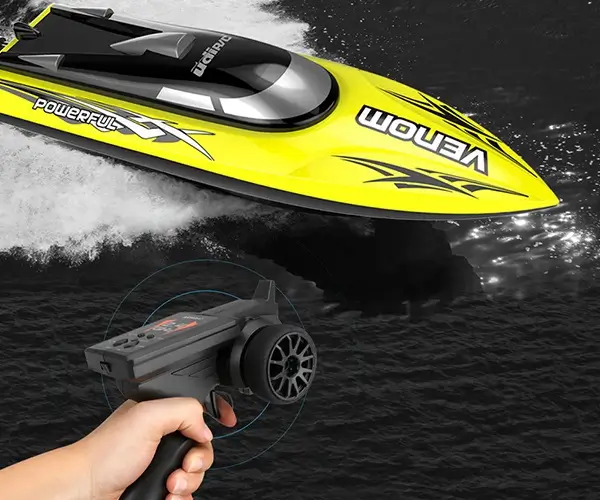Unleashing Your Creativity: The Power of Servo Motors in Arduino Uno Projects
If you're venturing into the exciting world of microcontrollers, the Arduino Uno stands out as an ideal starting point—it's user-friendly, affordable, and endlessly customizable. One of the most fascinating components you can pair with it is the servo motor, a device that opens a whole universe of possibilities, from robotic arms to automated camera systems. But what exactly makes servo motors so compelling, and why are they such a favorite among hobbyists, students, and professional engineers alike?

What is a Servo Motor?
At its core, a servo motor is a type of rotary actuator that allows precise control of angular position. Unlike regular motors that spin freely, servo motors are designed to rotate to a specific position, hold it, and rotate again to a new position on command. This precision comes from an integrated controller circuit inside the servo, which interprets signals and adjusts the motor's position accordingly.
In the context of Arduino projects, the standard hobby servo motor typically operates on a 4.8 to 6-volt power supply and can rotate approximately 0 to 180 degrees, although some advanced servos can spin continuously or beyond these limits. The simplicity of operation and the accuracy make servos an indispensable component for many robotic and automation tasks.
How Does a Servo Motor Work?
Most hobby servo motors rely on Pulse Width Modulation (PWM) signals to determine their position. Basically, the Arduino sends a PWM signal where the width of the pulse (measured in milliseconds) corresponds to the desired angle. For example, a 1 ms pulse might mean 0 degrees, 1.5 ms for 90 degrees (center position), and 2 ms for 180 degrees.
Here's where the precision and responsiveness shine—by varying the pulse width, you command the servo to move smoothly to your specified position. The internal control circuitry then manages the motor's movement to match that command, holding the position with their internal feedback mechanism.
Why Use a Servo Motor with Arduino Uno?
The Arduino Uno's digital output pins are perfectly suited to generate PWM signals, making it straightforward to control a servo motor's position. Coupled with accessible libraries like the Servo.h library, controlling a servo with Arduino becomes almost as simple as writing a few lines of code.
This ease of control makes servo motors popular in applications where precise positioning is fundamental. Whether you're programming a robotic arm to pick objects, creating an automated camera slider, or building an interactive art installation, servo motors are your best friends.
Getting Started: Choosing the Right Servo for Your Project
If you're just starting, selecting the right servo motor can seem daunting. Here are key considerations:
Torque: How much force can the servo exert? For lightweight projects like small robots, a servo with 1-2 kg·cm torque might suffice. Heavy-duty applications demand more.
Speed: How quickly does the servo rotate to the desired position? Faster servos can be advantageous in dynamic applications.
Voltage Compatibility: Ensure the servo runs on your power supply (common are 5V and 6V).
Size and Form Factor: Make sure the servo fits into your design constraints.
Continuous vs. Positional Servos: Standard servos are for position control; continuous servos are better for wheel drive systems or applications requiring constant rotation.
Setup and Wiring: Bringing the Servo Motor to Life
Connecting a servo to an Arduino Uno is straightforward:
Power (VCC): Connect to +5V on the Arduino or an external power supply if your servo requires more current.
Ground (GND): Connect to ground.
Control Signal: Connect to one of the digital PWM pins (like pin 9).
Here's a simple diagram:
Servo Power (Red) → Arduino 5V or external power supply +V Servo Ground (Brown/Black) → Arduino GND or external power GND Servo Signal (Orange/White) → Arduino Digital Pin 9 (PWM capable)
For small servos, powering directly from the Arduino often suffices, but for bigger or multiple servos, external power is recommended to prevent overload.
Programming Your Servo: The Basics
To control the servo, you'll need the Arduino IDE and the Servo.h library, which simplifies PWM control for servos.
Here's a quick snippet:
#include Servo myServo; // Create servo object void setup() { myServo.attach(9); // Attach servo to pin 9 } void loop() { myServo.write(0); // Move to 0 degrees delay(1000); // Wait 1 second myServo.write(90); // Move to 90 degrees delay(1000); // Wait 1 second myServo.write(180); // Move to 180 degrees delay(1000); // Wait 1 second }
This simple code cycles the servo through its full range, illustrating predictability and ease of use.
Troubleshooting Common Issues
Servo not moving? Ensure power and ground are correctly connected, and that the code is running. Also, check the servo's mechanical limits.
Jumpy or inconsistent movements? Try powering the servo from an external source rather than the Arduino, especially if you’re using multiple servos.
Overheating? Use adequate power supplies and avoid continuous operation beyond the servo’s specifications.
With just these basics, you're ready to start experimenting and developing your own projects around servo motors and Arduino Uno.
Stay tuned for Part 2, where we’ll delve into advanced applications, project ideas, troubleshooting tips, and innovative ways to leverage servo motors in your DIY electronics repertoire. Whether you're dreaming of a robotic assistant or an automated art installation, we'll help you turn those visions into reality.
Kpower has delivered professional drive system solutions to over 500 enterprise clients globally with products covering various fields such as Smart Home Systems, Automatic Electronics, Robotics, Precision Agriculture, Drones, and Industrial Automation.




































